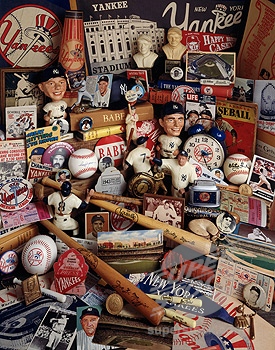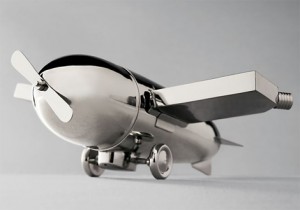These Steiff birds rule the roost!
April 14th, 2010 by adminThey say birds of a feather flock together… and based on this note from a reader in Switzerland, nothing could be closer to the truth! Check out this inquiry from Petra, who asks about a three-quarter century old collection of fine feathered Steiff friends. She writes…
“Hello Steiffgal,
Best regards,
Petra”
These wonderful birds are certainly something to crow about and rarer than hen’s teeth! Let’s take a look at this collection and the history behind it.
This full nest of birds consists of (left to right) Steiff’s robin (article number 6508,1), green woodpecker (article number 6508,2), finch (article number 6508,3), blue tit (article number 6508,4), sparrow (article number 6508,5), and golden bunting (article number 6508,6). Each is standing, has a swivel head, felt beak and tail feathers, metal legs, and black bead eyes. These birds are made from Nomotta wool, a dense material that feels like a cross between the texture of Steiff’s well-know fuzzy post-war “pom-pom” animals and really lush alpaca. Each of these beautiful birds was in the Steiff line from 1934 through 1943.
This fabulous flock has two mysteries which are fascinating in a good way. The first is the size of the birds. Petra describes each being 5 cm. However, they are all numbered in the 6508,X convention. The ” 08″ in the last digits of the article number series indicates that they are 8 cm. A very intriguing 3 cm disconnect! (Just for interest, all of these birds also came in 4 cm; their article number series is 6504,X.)
The second mystery is the tags on the legs of the birds. In general, as a rule of thumb, white tags indicate products made from 1905 through 1926, reddish-orange ones indicate products made from 1926 to 1934, and yellow ones indicate products made from 1934 onward. One of the birds has a reddish-orange tag and all the others are much lighter, yet the entire collection appears to be from the same time frame. How can this be?
Let’s take a bird’s eye view of the situation. The green woodpecker was made in 1934 – 1943 and has a red tag from the 1926 -1934 time frame. This points to the fact that he most likely was made in 1934 if you align these two factors. It is Steiffgal’s best guess that the whitish colored tags on the other five birds were at one time a pale yellow. If that were the case, since the birds were all made in the 1934 – 1943 time frame, and the yellow tags indicate products made from 1934 onward, the other birds were probably were made also around the same time as the green woodpecker. Net-net, 1934 was a transition time between the reddish tags and the yellow tags, which would explain why the set sports both reddish and lighter Steiff tags.
As for the value of this fine collection of woolen miniatures… Steiffgal is not a formal appraiser and strongly believes that something is “worth” what someone else will pay for it. Many parts of the country are seeing a most welcomed uptick in the economy which may be slowly leveling the playing field between buyers over sellers. It does seem these times still slightly favor buyers over sellers, though! However, this is quite the grouping in fine condition; the crisp pre-war Steiff labels add tremendously to the collection’s appeal. Based on other sales and some auction research, Steiffgal will go out on a lark and value this collection as a group in the $750 – $1000 range.
On a wing and a prayer you made it to the end of this posting on vintage Steiff birds… now that’s a feather in your cap for sure!
Have a question about one of your Steiff treasures, bird brained or otherwise? Let’s talk! Click here to learn more.












 To many, “shaken, not stirred” summons memories of Sean Connery, European models and exotic beaches. To collectors of antique barware, it means a whole lot more.
To many, “shaken, not stirred” summons memories of Sean Connery, European models and exotic beaches. To collectors of antique barware, it means a whole lot more.